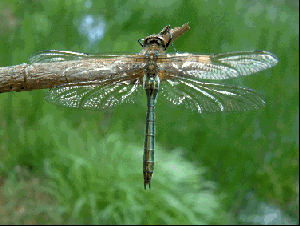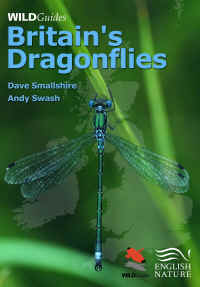
a freshly-emerged Downy Emerald
DAMSEL AND DRAGONFLY DIARY
|
Where to find Damsel and Dragonflies in Cookham |
Dragonflies and Damselflies are amongst our most beautiful and dramatic insects. Large, colourful and obvious, we will all encounter at least some of the 60 or so species seen in UK around the Cookhams.
Never far from water, their life cycle is one stage less than that of butterflies. Both lay eggs, which hatch into larvae, but in the case of dragons and damsels, the larvae live underwater as nymphs, rather than a chrysalis, and keep swapping outer skins as they grow. This may involve up to 16 stages (or instars) for the biggest varieties, taking 4 or even 5 years. The final stage instar eventually climbs up emergent vegetation and, over an hour or two, the final flying insect wrestles itself free of its underwater dive suit and dons the amazing outfit we are familiar with.
To separate Damselflies from Dragonflies, one just has to remember that Damsels always fold their wings over their back, whilst Dragons hold their wings out like an aeroplane’s. They are mostly on the wing from late March to October, depending on the species. And a final point about these most aerobatic of creatures; they do NOT sting. In fact, they have no sting, just a pair of claspers at the tail tip in the case of males, and an egg-laying feature for the females.
We are fortunate to have plenty of water bodies around the Cookhams and this year, we were thrilled to obtain the services of Ken Crick, a recognised expert from Hampshire, who conducted surveys of a number of stretches of water on our behalf. His findings are listed in the Dossier section. Amongst the highlights were several Variable Damselflies, a relative scarcity in the Thames Valley, and Downy Emerald, one of the larger dragons and again not too common here. Some of his photographs taken during the surveys are featured opposite. We are grateful to owners of the private waters for permission to survey them.
If any one would like to learn more about these incredible insects, the best book available is Britain’s Dragonflies by Andy Swash (who used to live in Berks) and Dave Smallshire (£15) available from 01628-529297.
